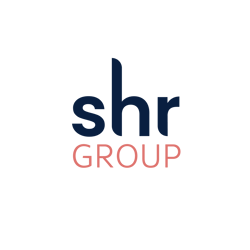Our latest panel talks us through how hoteliers can optimize channel mix and ensure you're driving bookings and revenue through the most appropriate channels
Jason Freed's recap of the panel discussion...
Beyond Recovery: Optimize Channel Connectivity and Win Market Share
An unprecedented time of low demand is no time for legacy inefficiencies. In the webinar, “Beyond Recovery: Optimize Channel Connectivity and Win Market Share,” presenters explored how simple integrations between systems and among departments can remove friction and drive the most revenue in the current market conditions.
During the pandemic, Annemieke Dunlop, VP of revenue management at Aparium Hotel Group, found herself doing more with less. Based in Chicago and operating a portfolio of seven boutique hotels mostly in the Midwest, Aparium started to merge overlapping disciplines (sales, revenue, marketing and distribution) into what they now call their commercial team. This way, executives at Aparium can all share insight into different distribution channels and collaborate more effectively.
The team has placed an extra emphasis on having accurate digital information, analyzing their channel mix and drilling down on cost of transaction across the portfolio.
“Understanding each channel cost has really opened our eyes to where our focus and our efforts should be,” Dunlop said. All of that starts with data reporting from their CRS, Windsurfer from SHR.
“It's a simple extraction of data from Windsurfer as a roll-up for all of the properties, and then from there we're able to incorporate our P&L data, which is a quick extract,” she said. “It's a quick month-end analysis of where we are performing per channel and per sub channel and what the cost associated with that is.”
For Aparium, OTAs are still necessary for awareness, especially in low demand times, but they have moved a lot of their marketing dollars to other opportunities like metasearch, “diversifying that spend and trying new ways to capture a direct customer.”
“OTAs give us access to some markets we can’t access,” she says. “But there’s nothing like having that presence on your own website because you have control. It's the face of the company.”
Dunlop focuses on what makes Aparium hotels stand out from their competition, and how to communicate that to potential guests. Because Aparium operates mostly boutique hotels, Dunlop emphasized how creativity in online content is a key focus to sell their brand and draw new customers.
With a booking window often shorter than seven days and a short length of stay, Aparium is focusing more on one-night staycations. Because their hotels in Minneapolis and Detroit have indoor dining restrictions, they responded by converting some rooms into “dining suites,” by removing furniture and making them rooms where people can actually dine.
A cool concept, but it needs to hit the right customers, at the right time and in the right way. Aparium gains these insights with A/B testing and retargeting. Was it the discount or the value-added messaging that drove the most conversions? What is the demographics of those who picked one or the other? The data is there to analyze.
COVID has also shifted the necessity and utility of reporting, allowing Aparium’s team to quickly spot trends and keep everyone on this integrated team, across departments, working from home, all informed. This means tracking daily pickup reports at each hotel, which are then translated into a company roll up.
“What was our pickup by day by hotel and how does that compare to prior?” she asks. “Because at this point, two or three rooms make a world of difference in terms of indexing or performance.”
Integrations are Key
Proper integrations ensure that Aparium can build rates in the PMS and have them automatically flow immediately to the CRS, which then publishes them across all channels.
“How quickly hotels had to adapt to create new rate models during the pandemic, that's where you can see the real advantage of having technology that does this,” said Mukund Mohan, VP of product strategy at Infor. “You build it once and immediately have price parity across all the channels. It’s not possible for one person to make sure that all of that is done.”
Critical to this strategy is ensuring what the customer sees on your website translates over into the booking engine, so that when they hit the booking engine they're not all of a sudden seeing different things.
“Integration and automation is critical, especially if you want to have a strong book-direct strategy,” said Amanda Milam, integration manager at SHR. “Some things here include your guest comments and any payment details, any add-on services booked – all of that really needs to integrate very tightly, otherwise you're going to lose that guess with friction at check-in. Having a really strong PMS integration into your CRS and with your booking engine is really key.”
Some tips to remember:
- Make sure all of your content data is up to date. OTAs are limiting in how you can describe certain things or have their own naming conventions, “but making that as consistent as you can definitely helps,” Milam says.
- On the booking engine side, load in great images and descriptions with all of your amenities, and then configure how they are displayed. You have options.
- If applicable, pull-in other reservation systems, such as spas, golf, restaurants or any other add-on amenities you have.
“The critical integration is between a PMS and a CRS because the reservation system has connectivity to all the other distribution channels,” Mohan said.
Find more 'Beyond Recovery' resources for your hotel at https://shr.global/beyond-recovery-resource.


